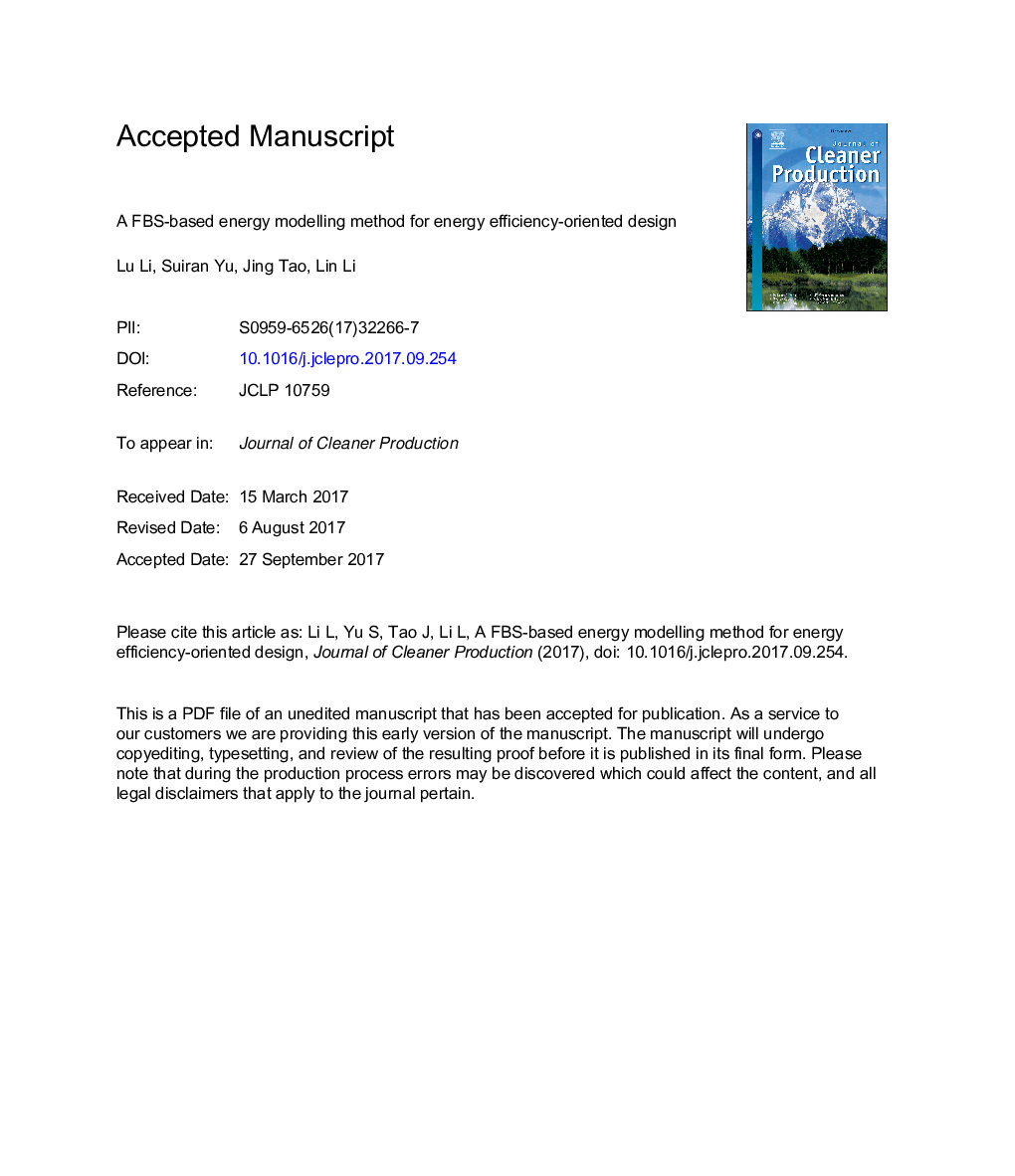| Article ID | Journal | Published Year | Pages | File Type |
|---|---|---|---|---|
| 8099732 | Journal of Cleaner Production | 2018 | 25 Pages |
Abstract
Energy efficiency-oriented design is highly valued in reducing the energy consumption during product use and models for characterizing energy consumption are widely regarded as essential prerequisites of energy efficiency-oriented design. Unfortunately, correlating energy consumption with the products' design features during the design process is a difficult task. To address this challenge, this paper uses the Function-Behaviour-Structure (FBS) ontology as a bridge to link design features and energy consumption throughout the design process and proposes a FBS-based energy modelling method. This method divides the energy modelling process into two steps. The first is to identify the required energy information and characteristics from available data on the design. The second step is to arrange the obtained information in a logical order to create energy models. Two tools, namely the modified FBS framework and the energy flow diagram, are introduced to aid designers in respectively dealing with the two energy modelling steps. To demonstrate this method, a case study considering mechanical linkage servo press is carried out.
Keywords
Related Topics
Physical Sciences and Engineering
Energy
Renewable Energy, Sustainability and the Environment
Authors
Lu Li, Suiran Yu, Jing Tao, Lin Li,
